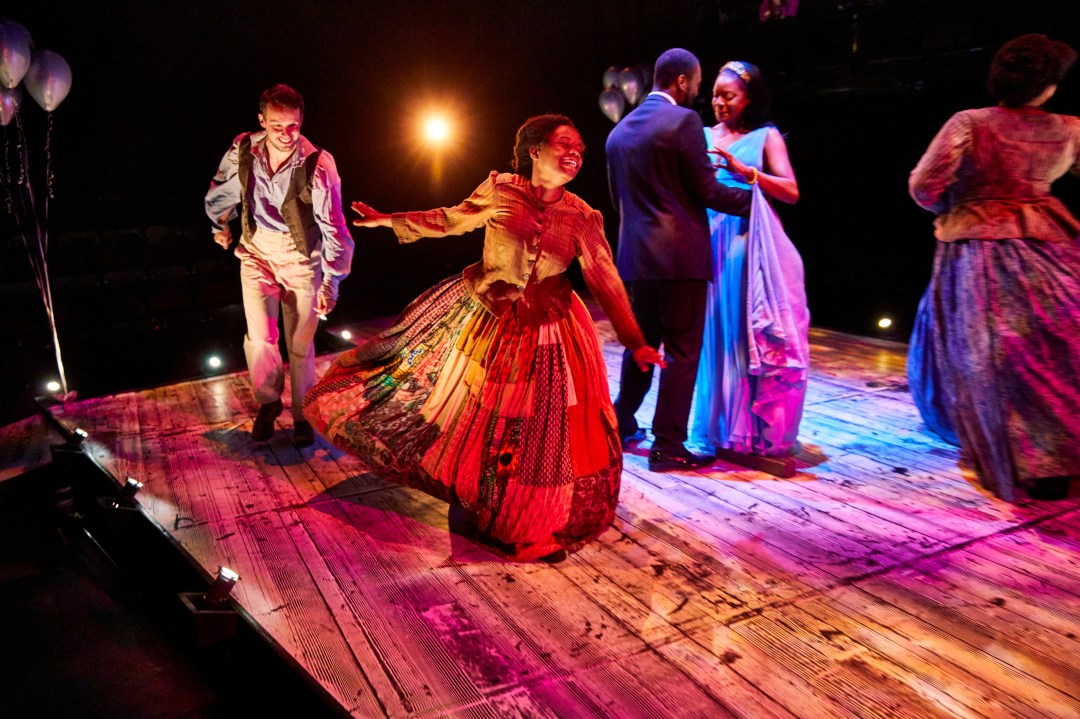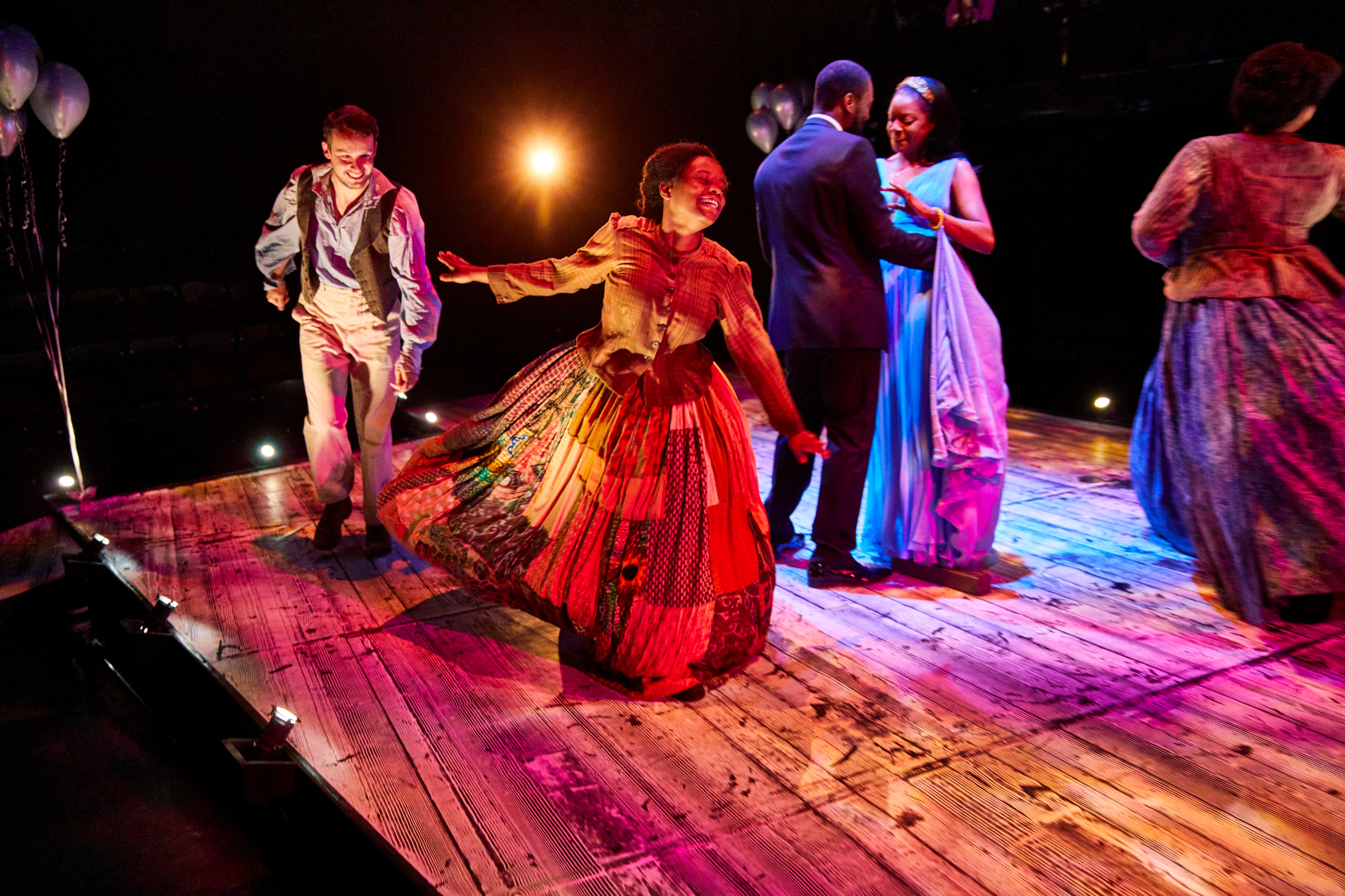Deep breath. Here goes. Winsome Pinnock’s new play about Turner opens with one of the most confusing and illogical scenes you’re ever likely to see. A teacher on a school trip is showing her pupils a Turner painting displayed in a gallery housed inside a ship donated by the producers of a film starring a famous actress, Lou, who happens to be on board wearing a sumptuous outfit for an awards ceremony, which she plans to avoid for fear that a coveted prize will be handed to a rival. Lou invites the school teacher to an after party that is scheduled to start when the awards ceremony ends. She then gets distracted by the sight of movement on the surface of the Turner canvas. The painted figures, frets Lou, appear to be shifting and jerking. Then she reveals that this is the very picture that drove John Ruskin mad. The scene ends with Lou wondering if she too is going crazy. Play-goers will ask themselves the same thing.
Scene two, by contrast, is relatively simple. It takes place in a studio where a new movie about Turner’s life is being filmed. Then the action scrolls back to the 19th century where we meet the real Turner as he bickers with a black female orphan who shares his home. Is that true? Turner’s housemate was a black Cockney? The playwright explains in the programme notes that she completed ‘a lot of research’ before writing the script so she deserves credit as a historical authority.
The scene ends with Lou wondering if she is going crazy. Play-goers will ask themselves the same thing
The next scene shows Turner, aged 65, disguising himself as a one-armed sketch-artist and stowing away on a slave ship where he thwarts a rebellion by hitting the chief mutineer over the head with a wooden bucket.









Comments
Join the debate for just £1 a month
Be part of the conversation with other Spectator readers by getting your first three months for £3.
UNLOCK ACCESS Just £1 a monthAlready a subscriber? Log in